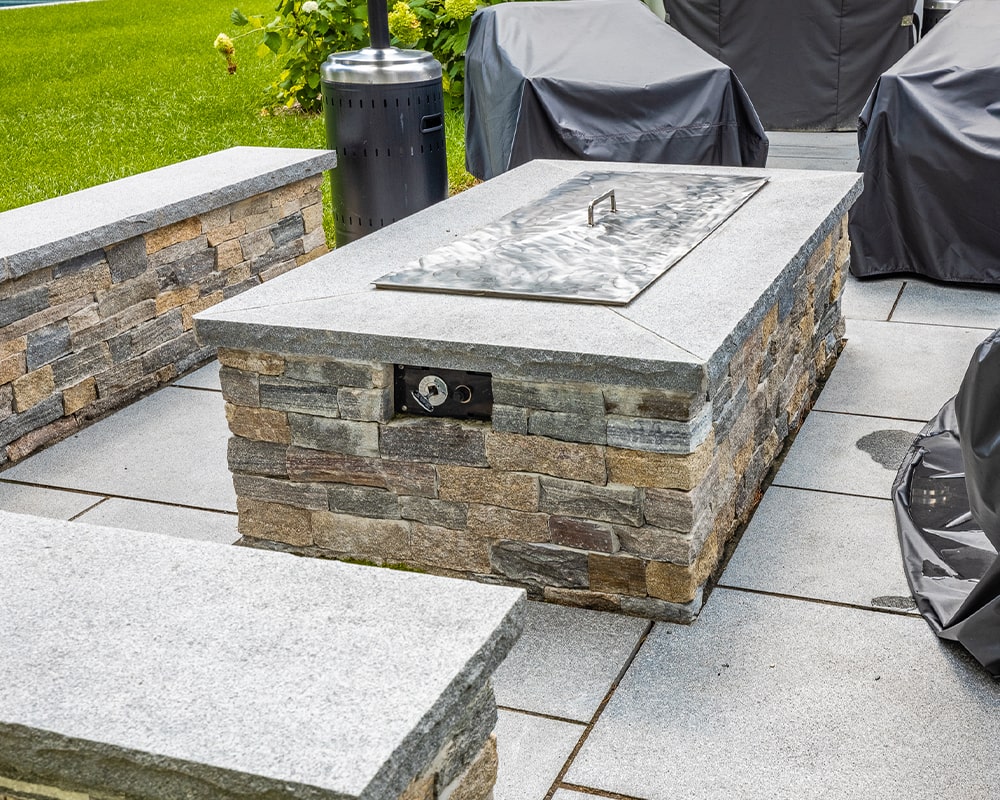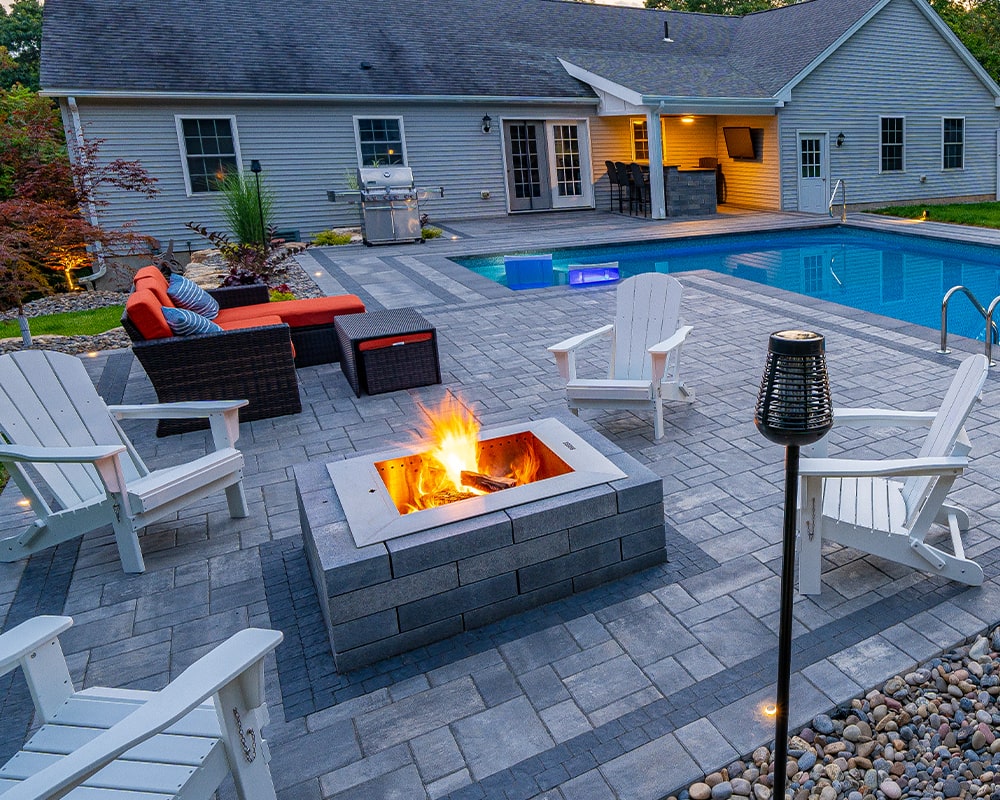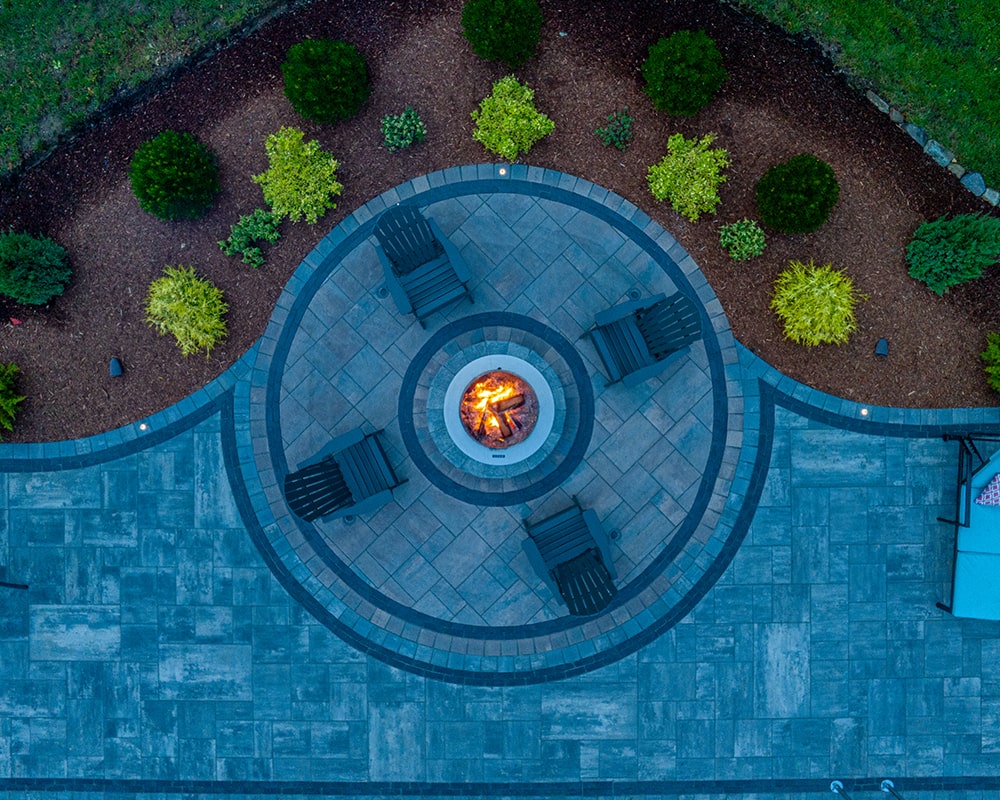The Best Firepit For Your Backyard
There are many different options for fire pits for your patio and deck space. Here is a quick rundown of the pros and cons:
Gas vs. Wood
Wood-burning fire pits are great for those who love the traditional elements of a fire: the smoke, the act of collecting and preparing wood, lighting a fire, and even teaching someone else how to light a fire. While it’s a bit messier than gas or propane options, a wood-burning fire pit offers an experience that’s impossible to replicate. However, it requires more attention and time to maintain the fire, so if you only have 15-20 minutes to sit by the fire, a wood-burning fire pit might not be practical due to the setup and cleanup time involved.
A propane or natural gas fire pit provides on-demand, controlled fire and flame patterns, perfect for those who want their fire pit available at the flip of a switch. If you want to use your fire pit anytime, even for just 10-20 minutes, a gas or propane fire pit might be the best option for you. These fire pits are generally smokeless, as they burn much cleaner than wood. Instead of maintaining a wood supply, you’ll have a propane or natural gas tank and piping to maintain and keep filled. Both options are great, but every project has different client preferences.
Built-In vs. Movable
Depending on the space you plan to use the fire pit in and how you plan to use that space, you might prefer a built-in fire pit or a movable one. Built-in fire pits are great for outdoor living spaces with plenty of room and a consistent layout. However, if you think you’ll regularly change the layout of your outdoor living space and rearrange furniture, a built-in fire pit may limit your flexibility. There have been some great movable fireplaces that have come to market over the past decade. They are limited to specific sizes and styles, but they offer flexibility and are generally made of metal, making them easy to move with 1-2 people. These fire pits are only available as wood-burning fire pits.
Kits vs. Custom Built
As with many popular items, companies have started making fire pit kits as a more affordable option to custom-built items. Numerous kits are available nowadays, often adaptable for wood-burning or gas/propane. These are built-in kits. Lower-cost kits generally don’t have the same long-term durability as higher-end kits or custom-built fire pits. Custom-built fire pits allow for more aesthetic options, with your imagination as the biggest limiting factor.
Smokeless vs. Traditional
Smokeless fire pits have become a trend over the past few years. While many smokeless fire pits and inserts perform very well in reducing the amount of smoke they emit, they are generally not truly smokeless in real-world applications. The biggest factor in maximizing a smokeless fire pit or insert is controlling the wood being burned. Clean, dry firewood will help provide a smokeless experience, while dirty, green, or wet wood will hinder a smokeless fire pit’s ability to perform. You also need to be diligent about keeping the smokeless fire pit or insert clean. They work well when directions are followed, but they are not smokeless without a little extra effort.
Additional Things to Consider
Some important things to consider when designing your fire pit area include the following, as it relates to wood-burning vs. propane/natural gas:
- If propane or natural gas, where will the tank go? Above or below ground? How far does the piping have to be trenched between the tank and fire pit? These are additional costs above the fire pit itself.
- A propane or natural gas fire pit will generally cost a little more to run, as propane/natural gas and the delivery system (tanks/pipes) cost more than stacking wood.
- How and where would you store wood? Do you have the space nearby to keep it dry?
- How many people do you foresee sitting around the fire pit at a time? Is there enough space to support this? We always recommend designing a space for normal use, not the once-a-year party that you may host, which is larger than typical use.
- If you are considering a fire pit, also consider a fireplace. Fireplaces generally cost more, but depending on the space, intended use, and preferences, sometimes they are a better fit.




